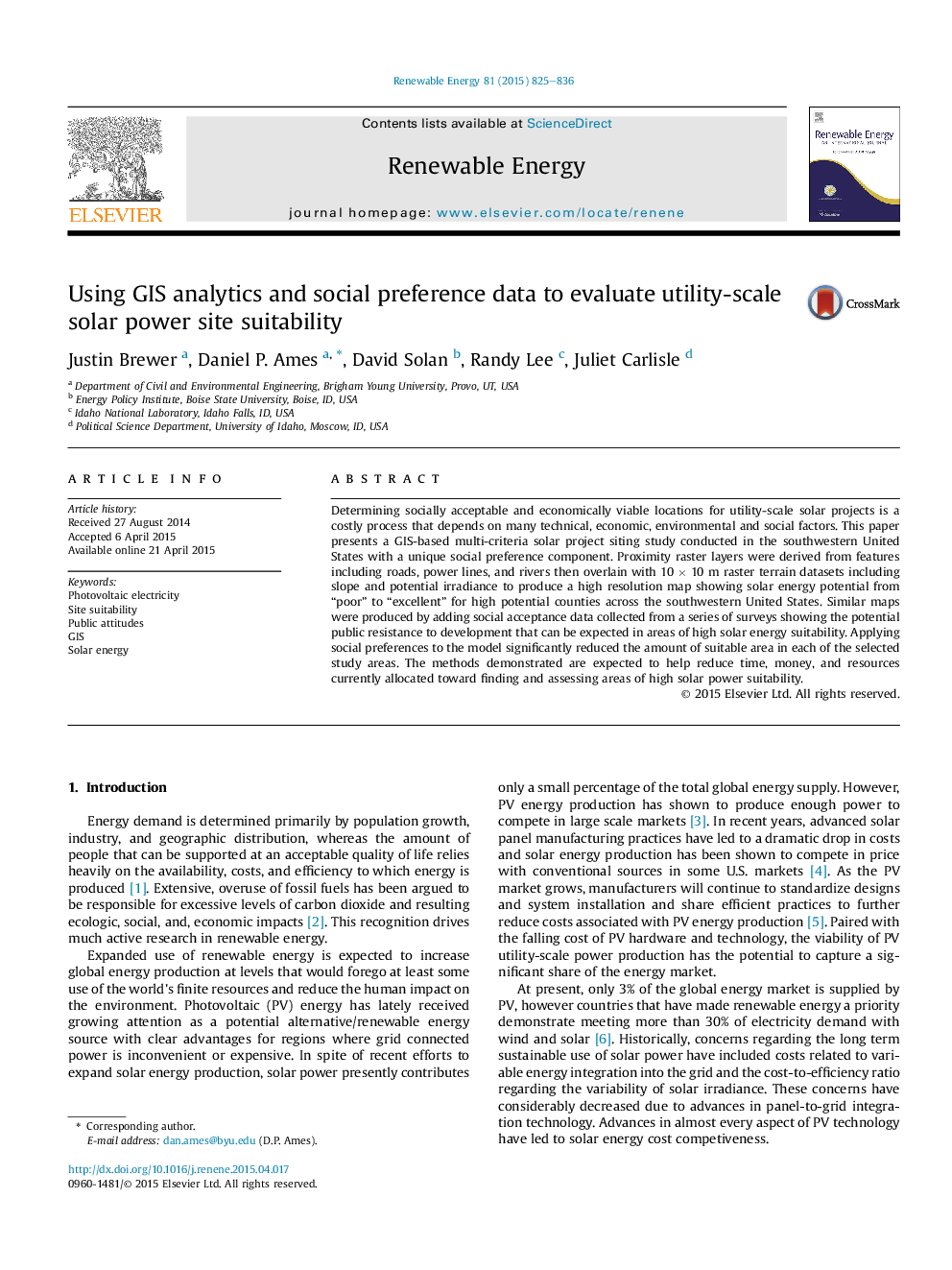| Article ID | Journal | Published Year | Pages | File Type |
|---|---|---|---|---|
| 6767541 | Renewable Energy | 2015 | 12 Pages |
Abstract
Determining socially acceptable and economically viable locations for utility-scale solar projects is a costly process that depends on many technical, economic, environmental and social factors. This paper presents a GIS-based multi-criteria solar project siting study conducted in the southwestern United States with a unique social preference component. Proximity raster layers were derived from features including roads, power lines, and rivers then overlain with 10Â ÃÂ 10Â m raster terrain datasets including slope and potential irradiance to produce a high resolution map showing solar energy potential from “poor” to “excellent” for high potential counties across the southwestern United States. Similar maps were produced by adding social acceptance data collected from a series of surveys showing the potential public resistance to development that can be expected in areas of high solar energy suitability. Applying social preferences to the model significantly reduced the amount of suitable area in each of the selected study areas. The methods demonstrated are expected to help reduce time, money, and resources currently allocated toward finding and assessing areas of high solar power suitability.
Related Topics
Physical Sciences and Engineering
Energy
Renewable Energy, Sustainability and the Environment
Authors
Justin Brewer, Daniel P. Ames, David Solan, Randy Lee, Juliet Carlisle,
